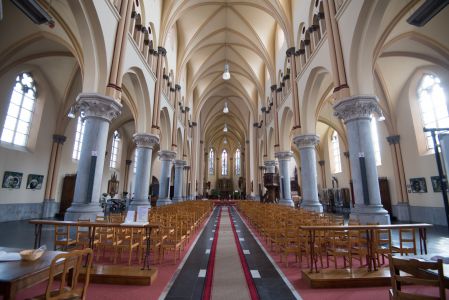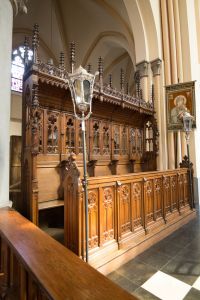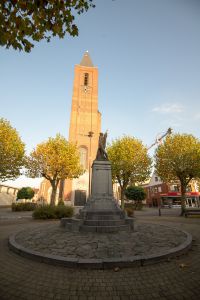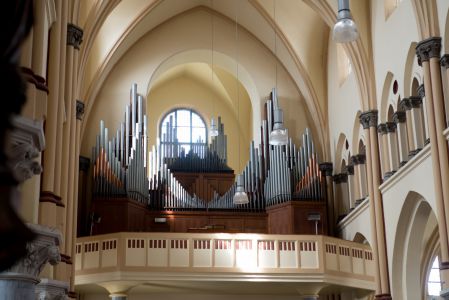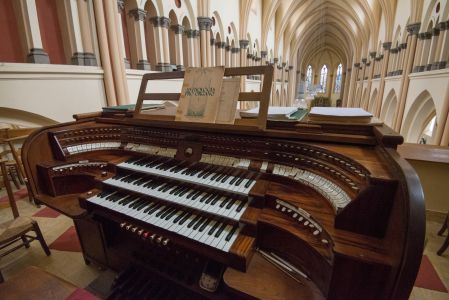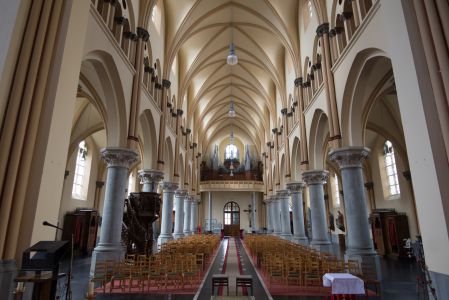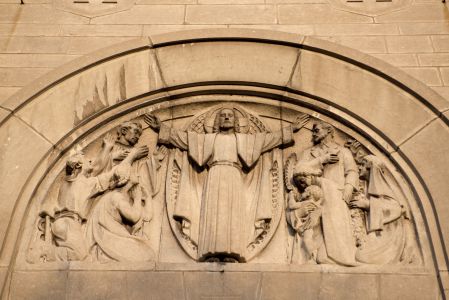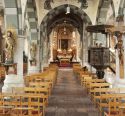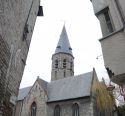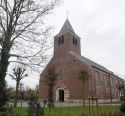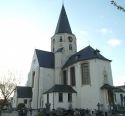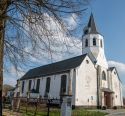Church | 1877 - 1879 | Neogothic | Catholic Church



Map
Opening hours
01 January - 31 December
Mon 9.00 - 16.00
Tue 9.00 - 16.00
Wed 9.00 - 16.00
Thu 9.00 - 16.00
Fri 9.00 - 16.00
Sat 9.00 - 16.00
Sun 9.00 - 16.00
Religious offices
Description
In 1570 Saint Laurentius was elevated to an independent parish, apart from Assenede. The old St. Laurentius Chapel (1377) became a parish church. In the 19th century, this church was in such a bad state that a renewal was imperative. The new impressive neo-Gothic church designed by the Ghent architect Edmond de Perre-Montigny was inaugurated in 1879.
At the end of the First World War, in the beginning of November 1918, the roof and several stained-glass windows were damaged during the demolition of a bridge. The repairs were made by the Ghent architect A.R. Janssens in 1920. With the German invasion of Belgium in May 1940, the Belgian army dynamited the tower "as a precaution". Unfortunately the debris landed on the roof of the church. The transept and the choir, the original stained-glass windows from 1900, the neo-Gothic paintings from 1900 by artist Remi Goethals and the organ of the Reygaert brothers were destroyed. The damage was repaired only in 1950-1952. The ship, the choir and transept were rebuilt in the original neo-Gothic style. The tower was replaced by a sleek and modern construction of 65 meters.
The interior is impressively clear and evenly painted. The presbytery and the side choirs are separated by beautiful iron gates from 1902 (ornamental metal-worker I. Blanquaert).
The furniture is uniform neo-Gothic and specially manufactured for the new church in the years 1880-1900. The high altar and side altars contain numerous images from the period of and after 1891. The neo-Gothic altarpiece from 1894, coming from the chapel of Saint Jan Berchmans’ College in Antwerp fits wonderfully well in the whole.
KIKIRPA : Photo-library on line
Photos
Remarkable elements
Retable
A retable used to be an important instrument in the ritual: it was usually closed. It was only opened during the liturgical service. Therefore, the panels are painted on both sides. It preserves the body of Christ, which explains why some altarpieces are enormously elaborate works of art.
Neo-Gothic altarpiece from the former chapel of the Sint-Jan Berchmanscollege in Antwerp. It was a gift from the Guyot-Van Praet family in 1894. After a long detour it ended up in St. Lawrence's Church in perpetual loan. It is a combination of sculpture and painting. The following artists and craftsmen worked on it: architect Frans Baeckelmans (1827-1896) - sculptors Jan Baptist Van Wint (1829-1906) and Jan Baptist De Boeck (1826-1902) - painter Jean-Baptiste Anthony (1845-1930). A brochure about the various panels is available on site.
Translated with www.DeepL.com/Translator
Pietà
The theme of the pieta originated in the pious interest in Mary's compassion for the suffering of her son. Pieta is therefore Italian for 'compassion'. From the 13th to the 17th century, the Pieta, the depiction of Mary with the body of her deceased son on her lap, was one of the most popular themes in Christian art. The moment was derived from the images of the Descent from the Cross on which the bystanders complained with Mary about the crucified. From there, the image began to lead a life of its own, especially as a free-standing image. The best-known example is in St. Peter's Basilica in Rome by Michelangelo.
Way of the Cross
This masterpiece was painted by Brother Maximinus (1903-1973) and was created in response to J. S. Bach's passion. Each time we see the main character displayed in a close-up, clearly visible on a background of spectators.
Each station is divided into two fields by rich blue coloured spots: in one panel friends, in the other enemies of Christ. Although the concept is traditional, the artist has taken into account the latest discoveries of colorists and has integrated their subtle discoveries of color into his work. The St. Lawrence Way of the Cross ended up in St. Lawrence Church after a donation from Frans Heynze in 1962.
Pulpit
Valuable sculpture made by Fr. Van den Hende in 1889. The base shows the 'Good Shepherd'. On the pulpit there are 3 panels: the meeting of St. Laurentius with Pope Sixtus, the distribution of alms by St. Laurentius and the martyrdom of St. Laurtentius on the grid. On the sculpted staircases are St. Peter and Paul. The four corners carry the evangelists with their symbols at the feet: lion, eagle, man and ox. At the bottom of the pulpit, decorated with leaf work, on the 6 corners angels are depicted with a banner with the following text 'Be perpetrators of the Word and not only hearers'.
Corpus Christi
The presumably 18th century statue of Christ is still in very good condition, beautifully carved with pleasant proportions and many details in the carving. The statue was restored by studio Vandenborre-Lauwers from Lovendegem. The original but heavily affected polychrome layer of paint and crown of thorns were not restored. The cross probably originates from the old church. Later it hung as a Calvary cross on the east facade of the Kerkstraat.
Stained glass window
The stained glass window from 1963 represents the coronation of Mary. It was designed by M. De Loor from Gentbrugge, teacher at Sint-Lucas and executed by glazier A. Calders from Mortsel.


